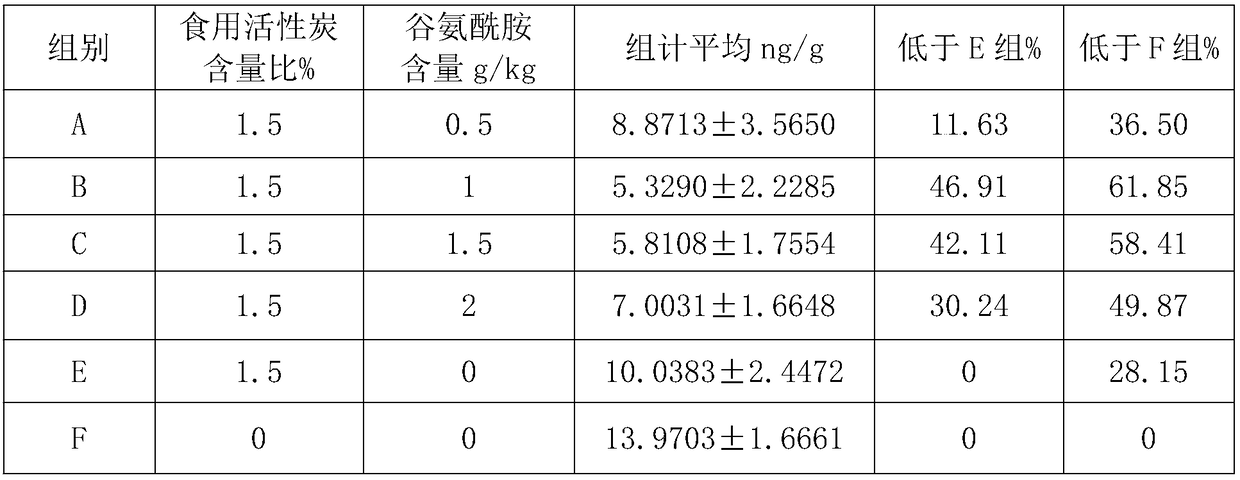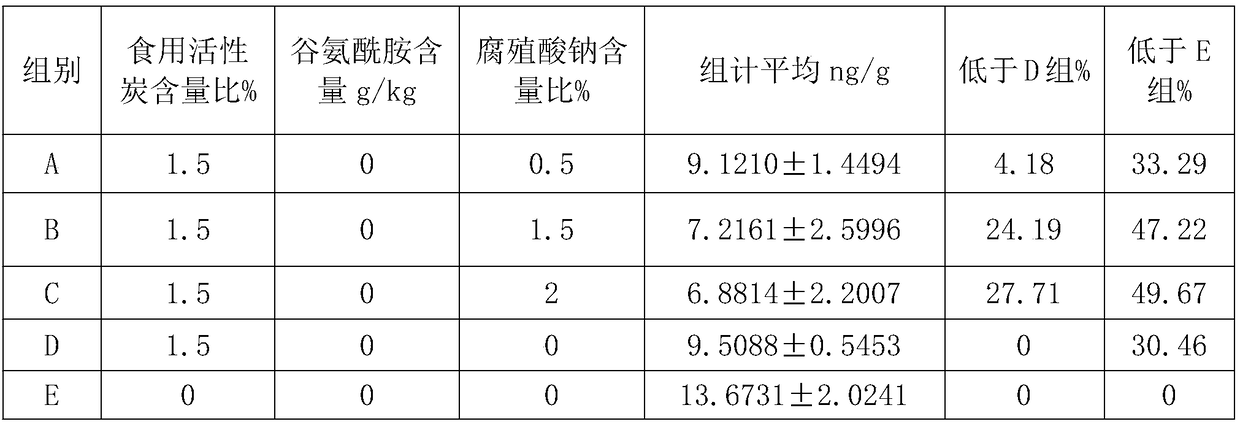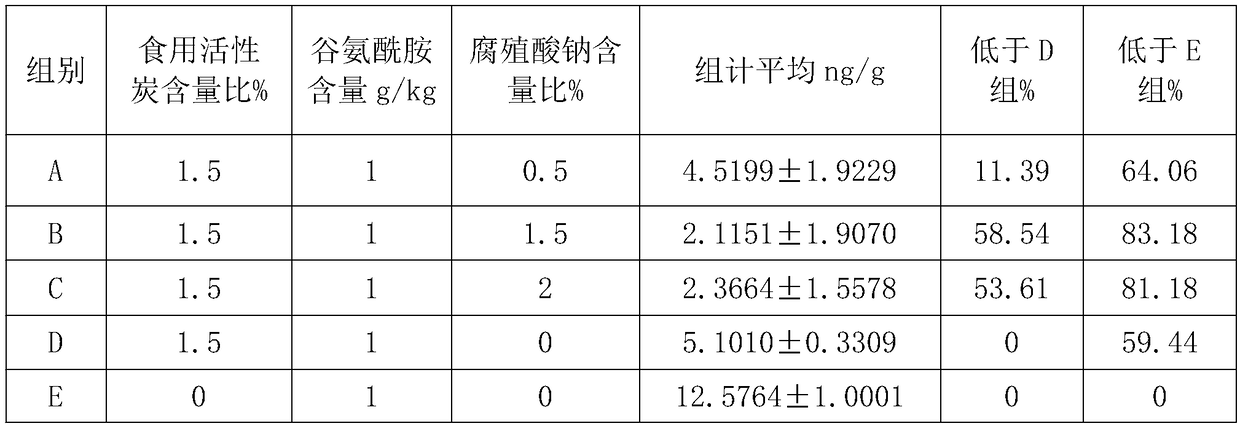Feed additive for reducing scatol in bodies of live pigs and preparation method of feed additive
A feed additive and skatole technology, applied in the field of livestock breeding, can solve the problems of destroying food nutrients, short food storage period, and pig health effects, and achieve the effects of reducing absorption, reducing skatole content, and improving pork taste.
- Summary
- Abstract
- Description
- Claims
- Application Information
AI Technical Summary
Problems solved by technology
Method used
Image
Examples
Embodiment 1
[0021] Divide 100 castrated boars with a body weight of 60.0±1kg into 5 groups A, B, C, D and E, with 4 replicates (circles) in each group, and 5 pigs in each replicate, wherein A, B, C and D are the experimental groups, and 0.5%, 1% and 1.5% of edible activated carbon are added to the pig's full-price feed respectively, and the E group is the control group. One pig was drawn for each replicate at slaughter. Each group used the same basal diet, the formula of complete feed: 65% corn, 20% soybean meal, 10% wheat bran, and 5% premix.
[0022] Pigs were slaughtered when their weight reached 100kg, and the pork back fat was taken to detect the content of 3-methylindole (skatole). The results are shown in Table 1.
[0023] Table 1: 3-methylindole (skatole) content
[0024] group
[0025] The test results showed that only adding edible activated carbon to the diet could reduce the concentration of skatole to a certain extent. When the content ratio of edible activated ...
Embodiment 2
[0027] 120 castrated boars with a body weight of 60.0±1kg were divided into 6 groups A, B, C, D, E and F, with 4 replicates (pens) in each group and 5 pigs in each replicate, wherein A, B, C, and D are the experimental groups. Add 0.5g, 1g, 1.5g, and 2g of glutamine per kilogram to the full-price feed of pigs, and add 1.5% edible activated carbon to the groups A, B, C, D, and E. . Group F is the control group. One pig was drawn for each replicate at slaughter. Each group used the same basal diet, the formula of complete feed: 65% corn, 20% soybean meal, 10% wheat bran, and 5% premix.
[0028] Pigs were slaughtered when their weight reached 100kg, and the pork back fat was taken to detect the content of 3-methylindole (skatole). The results are shown in Table 2.
[0029] Table 2: 3-methylindole (skatole) content
[0030]
[0031] In Table 2, compared with group E, the concentration of 3-methylindole (skatole) in the back fat of each test group A, B, C and D decreased by...
Embodiment 3
[0035] Divide 100 castrated boars with a body weight of 60.0±1kg into 5 groups A, B, C, D and E, with 4 replicates (circles) in each group, and 5 pigs in each replicate, wherein A, B, C is the experimental group, 0.5%, 1% and 2% of sodium humate are added to the full-price feed of pigs, A, B, C and D are each added with 1.5% edible activated carbon, and D and E are the control groups. One pig was drawn for each replicate at slaughter. Each group used the same basal diet, the formula of complete feed: 65% corn, 20% soybean meal, 10% wheat bran, and 5% premix.
[0036] Pigs were slaughtered when their weight reached 100kg, and the pork back fat was taken to detect the content of 3-methylindole (skatole). The results are shown in Table 3.
[0037] Table 3: 3-methylindole (skatole) content
[0038]
[0039] In Table 3, compared with the control group, the concentration of 3-methylindole (skatole) in the pig backfat of each test group A, B, and C decreased by 4.18%, 24.19% an...
PUM
 Login to View More
Login to View More Abstract
Description
Claims
Application Information
 Login to View More
Login to View More - R&D
- Intellectual Property
- Life Sciences
- Materials
- Tech Scout
- Unparalleled Data Quality
- Higher Quality Content
- 60% Fewer Hallucinations
Browse by: Latest US Patents, China's latest patents, Technical Efficacy Thesaurus, Application Domain, Technology Topic, Popular Technical Reports.
© 2025 PatSnap. All rights reserved.Legal|Privacy policy|Modern Slavery Act Transparency Statement|Sitemap|About US| Contact US: help@patsnap.com



